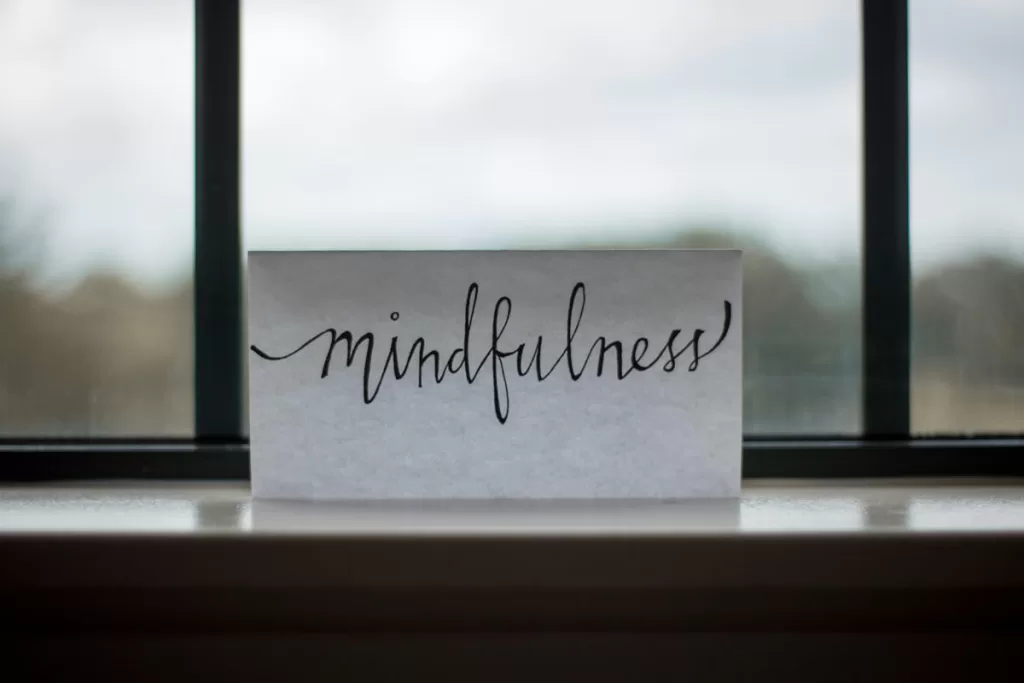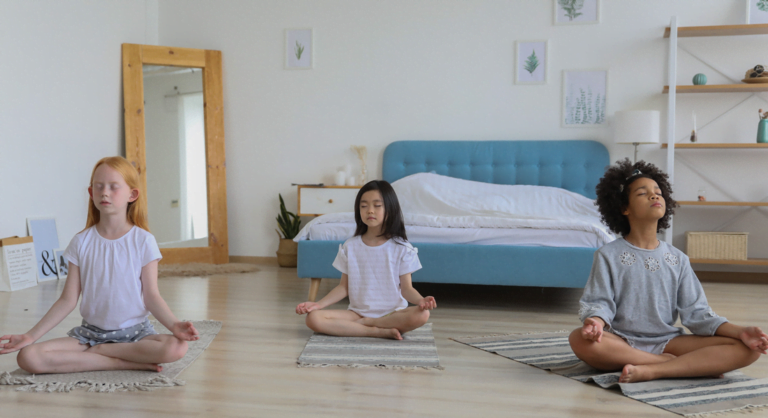In our world today, achieving a state of calm focus can often seem like an impossible dream. We are constantly bombarded with distractions, whether it’s our smartphones, social media notifications, or just the everyday hustle and bustle of life. But what if there was a way to declutter our minds, increase our focus, and attain a sense of tranquility? Read on to discover how to practice mindful solitude for improved concentration.
Mindful solitude—a practice that involves intentionally spending time alone, free from distractions, and fully immersed in the present moment. Proponents tout it as a powerful tool for improving concentration, enhancing self-awareness, and promoting overall mental well-being. So, let’s explore what mindful solitude is, how it can help enhance your concentration, and how to incorporate it into your daily life.
Understanding Mindful Solitude
Mindful solitude is a practice that revolves around the concept of consciously spending time alone. It’s not merely about being physically alone; instead, it emphasizes a deeper level of solitude where you detach from external distractions and engage fully with your thoughts and perceptions. This intentional isolation allows us to foster a deeper connection with our inner selves, promoting self-awareness and emotional balance.
The Role of Concentration in Everyday Life
Concentration is pivotal as it plays a significant role in our daily life and productivity. It’s the gateway to all thinking – perception, memory, learning, reasoning, problem-solving, and decision making. Without good concentration, the execution of these cognitive processes would be challenging.
Improving our ability to concentrate directly impacts our productivity levels and our ability to perform tasks efficiently and effectively. Whether you’re a student studying for exams, an artist working on a masterpiece, or a professional juggling multiple projects, enhanced concentration can be a game-changer. Through the practice of mindful solitude, we can sharpen our focus, thereby improving concentration and amplifying productivity.
Mindful Solitude as a Solution to Improve Concentration
Mindful solitude can serve as a potent tool for improving our concentration. The practice involves consciously disengaging from the external noises and distractions that divide our attention and pulling our focus inward. By doing so, we allow ourselves to hone our focus and attention on a single thought, idea, or task at a time. This state of heightened focus and concentration can then be transferred to our daily activities, enabling us to carry out tasks with greater precision and efficiency.
In addition, mindful solitude cultivates an atmosphere of calm and tranquility, which is helpful to concentrated work. In this serene state, our mind is less prone to distraction and more capable of deep, focused thought. By regularly practicing mindful solitude, we can train our mind to enter this state of enhanced concentration at will. This helps in improving our productivity and performance in various aspects of life.
Mindful solitude is not only a path to self-discovery and emotional balance but also a practical solution for anyone seeking to improve their concentration and productivity.
Practices for Mindful Solitude
Mindfulness Meditation Techniques
Deep Breathing Exercises
Deep breathing exercises are a fundamental meditation technique that can induce mindful solitude, promoting a state of calm and concentration. These exercises involve consciously slowing down and deepening your breath, which can have a soothing effect on the mind and body, thereby fostering an environment conducive to mindfulness and concentration.
A Step-by-Step Guide to Deep Breathing Exercises
- Find a Quiet Place: Choose a peaceful location where you won’t be disturbed. This could be a quiet room in your home, a garden, or even a secluded spot in a public park.
- Comfortable Position: Sit comfortably, with your back straight. You can sit on a chair or on the floor, depending on what feels best for you.
- Close Your Eyes: Gently close your eyes, which can help you focus inward and minimize external distractions.
- Breathe Slowly: Begin by slowly inhaling through your nose, counting to four in your mind as you do so. You should feel your stomach expand as you fill your lungs with air.
- Hold Your Breath: Once you’ve taken a full breath, hold it for a count of four.
- Exhale Slowly: Exhale through your mouth for a count of four, feeling your stomach contract as you release the air.
- Continue this Pattern: Repeat this pattern of slow and controlled breathing for several minutes, keeping your focus on the sensation of your breath moving in and out of your body.
- Return to Normal Breathing: When you’re ready to conclude the exercise, let your breath return to its normal rhythm and slowly open your eyes.
Body Scan Meditation
Body Scan Meditation is another remarkable method to practice Mindful Solitude that leads to improved concentration. This technique encourages you to focus on different parts of your body, one at a time, fostering a heightened state of awareness and connection with yourself. Here’s a simplified breakdown of how this method works:
- Find a Comfy Spot: Just like with deep breathing exercises, start by finding a quiet and comfortable space where you can sit undisturbed.
- Adopt a Relaxed Position: Sit or lie down in a position that you find most comfortable. Close your eyes and take a few moments to settle in.
- Focus on Your Body: Starting from your toes and moving up to the top of your head, try to focus your attention on each part of your body. Notice the sensations – it could be a tingling feeling, warmth, or even numbness.
- Don’t Rush: The key is to take your time and not rush through this process. Spend a few moments on each part before moving to the next.
- Acknowledge Your Thoughts: It’s natural for your mind to wander during this process. Instead of getting frustrated, acknowledge these thoughts and then gently bring your focus back to your body.
Disconnecting from Technology
In our modern life, technology has become a constant companion, almost like a persistent chatter in our ears. It’s like we’re always tuned into this massive concert of information, opinions, and notifications, and sometimes, it can be super overwhelming. Just think about it – when was the last time you really felt alone? And no, being alone in a room while scrolling through social media feeds doesn’t count!
So, what if we hit the pause button on technology for a while? Well, that’s what ‘Disconnecting from Technology’ is all about. It’s like taking a mini-vacation from the digital world to just be alone with our thoughts. It’s an awesome way to practice ‘Mindful Solitude’. When we switch off our devices, we can finally tune out the noise and tune into ourselves. We can pay attention to our thoughts, our feelings, and our surroundings. It’s like this quiet little space where we can just ‘be’.
Disconnecting from technology isn’t about hating on our devices or anything like that. It’s just about taking some time to cultivate our own thoughts and improve our concentration. So, go ahead, give it a shot. Turn off your phone, close your laptop, and just sit quietly. You might be surprised at just how much you can hear when the world goes silent.
Engaging in Solitary Activities
Nature Walks
Nature walks are like the ultimate chillaxation for your mind. Seriously, have you ever walked through a park or a forest and just listened to the sounds around you? It’s like this whole symphony of birds chirping, leaves rustling, and gentle breezes. It’s pretty amazing.
Walking alone in nature is a fantastic way to experience ‘Mindful Solitude’. You’re not really alone, you’re with nature. It’s just you, the trees, the wildlife, and your thoughts. You get to observe the little things like the pattern of leaves on a tree, the way the sunlight filters through the branches, or the melody of a distant bird song.
Not only that, but the simple act of walking is also great for your concentration. You have to pay attention to where you’re going, navigate paths, and avoid obstacles. It’s like a mini-meditation session mixed with a light workout.
So next time you’re feeling a bit overwhelmed or just want to get some alone time, try taking a nature walk. Grab a pair of comfy shoes, leave your phone at home, and just wander. Trust me, your mind will thank you for it!
Journaling
Journaling is another solitary activity that promotes ‘Mindful Solitude’ and improves concentration. It’s not just about writing down what you had for lunch or how your day went (although you can totally do that too!). It’s about digging deep into your thoughts, feelings, and experiences and giving them a voice. When you’re journaling, it’s just you and the paper (or screen, if you’re more into digital journaling). There’s no room for distractions, so your mind gets this chance to focus fully on one task.
Writing in a journal encourages you to slow down, reflect, and be present in the moment. It’s like having a personal conversation with yourself, where you’re both the speaker and the listener. You get to unravel your thoughts, explore different perspectives, and gain insights that you might have missed in the hustle and bustle of everyday life.
Plus, the act of writing itself is a great exercise for your brain. It requires you to focus, remember details, and organize your thoughts coherently. It’s like a mental workout that strengthens your concentration muscles.
Reading
Reading is an exceptional solitary activity that promotes ‘Mindful Solitude’ and enhances concentration. When you immerse yourself in a book, you’re entering a world created by words, fueled by your imagination. It’s just you and the story unfolding page after page, no distractions. This singular focus promotes mindfulness and solitude, encouraging you to live in the moment and tune out the noise of the outside world.
Engaging with a book requires concentration, as you follow the narrative, remember characters, and appreciate the intricacies of the plot. It’s like a gym for your mind, flexing and strengthening your attention span with each chapter.
And don’t think you’re confined to physical books. E-books, audiobooks, graphic novels, or informative articles on the web all provide the same benefits! So, the next time you’re looking for a way to practice mindful solitude, consider diving into a good book. It’s a rewarding journey of discovery, concentration, and peace.
Scientific Evidence Supporting Mindful Solitude
Several research studies have explored the connection between mindfulness and concentration, yielding promising results.
- Study by the University of Pennsylvania: A research study conducted by the University of Pennsylvania revealed that even short periods of mindfulness meditation could improve concentration and performance. The participants, who were human resource managers, showed improvements in their attention spans and cognitive abilities after an eight-week mindfulness program.
- Research by University of California: In a study by the University of California, it was found that mindfulness training improved GRE reading comprehension scores and working memory capacity, while reducing the occurrence of distracting thoughts.
- Mindfulness training in schools: Researches at the University of British Columbia found that students who underwent mindfulness training scored higher on math tests and had improved cognitive abilities.
- Study by the University of Miami: In a study by the University of Miami, mindfulness training was found to reduce mind-wandering in high-stress cohorts. This indicates that mindfulness can help improve focus, especially in stressful situations.
Integrating Mindful Solitude into Daily Life
Tips for Incorporating Mindful Solitude into a Busy Schedule
- Start Your Day with Solitude: Begin your day with a moment of mindful solitude. Even just a few minutes of quiet, contemplative time in the morning can set a calm and focused tone for the rest of your day.
- Mindful Commuting: Use your commute as a chance for mindfulness. If you drive, spend that time focusing on the feel of the wheel, the rhythm of the engine, and the sights outside your window. If you’re a passenger, put in some earbuds and lose yourself in a good audiobook or calming music.
- Schedule Alone Time: It’s important to make solitude a priority. Try to schedule a few blocks of time each week for solitary activities that encourage mindfulness, like reading, writing, stargazing, or even just sitting quietly in a peaceful spot.
- Mindfulness during Meals: Meal times are an excellent opportunity for practicing mindful solitude. Pay attention to the taste, texture, and smell of your food, appreciating each bite.
- Mindful Exercise: Physical activities like yoga or a quiet walk can provide great opportunities for mindfulness. Pay attention to your body’s movements and the sensations you feel as you exercise.
Creating a Mindful Space at Home or Work

- Choose a Quiet Spot: The spot you choose for your mindful space should ideally be somewhere quiet and away from the hustle and bustle of everyday activities. This will help you to retreat from distractions and focus on the present moment.
- Keep it Clean and Tidy: An uncluttered space promotes an uncluttered mind. Keep your mindful space clean and free from unnecessary items. A simple, tidy space can help enhance your focus and concentration.
- Include Nature: If possible, try to incorporate elements of nature into your mindful space. This could be a potted plant, a vase of fresh flowers, or even a small water feature. Nature has a calming effect and can enhance the experience of mindfulness.
- Comfort is Key: Ensure your mindful space is comfortable. You could include a cozy chair or a cushioned mat for meditation. The more comfortable you are, the easier it will be to focus your mind.
- Use Soft Lighting: Soft, warm lighting can create a relaxing atmosphere that’s conducive to mindfulness. If you can, make use of natural light during the day time.
- Personalize Your Space: Your mindful space should be a reflection of you. Add personal touches that make you feel relaxed and at peace. This could be a favorite piece of art, a photo that brings you joy, or a souvenir from a memorable trip.
Setting Realistic Goals for Practicing Mindful Solitude Regularly
Practicing mindful solitude regularly can be intimidating to start, but with realistic goals, it becomes more doable. Begin by setting aside a short amount of time each day for mindfulness, perhaps just five minutes to start. Gradually increase this time as your concentration improves.
The goal isn’t to clear your mind completely, but rather to focus on your thoughts, feelings, and sensations without judgement. Consider setting weekly or monthly goals, such as meditating for 20 minutes every day by the end of the month, or dedicating one day each week to disconnect from digital distractions.
It can be helpful to track your progress in a journal or an app. Most importantly, be patient with yourself. Progress may be slow, but any step towards mindful solitude is a step towards improved concentration.

Final Thoughts on Mindful Solitude for Improved Concentration
Mindful solitude can significantly enhance your concentration and overall cognitive performance. It offers a respite from the constant digital distractions and information overload that often hinder our ability to focus.
By dedicating regular time to mindfulness, you can train your mind to better navigate and manage your thoughts, emotions, and experiences. The practice fosters mental clarity, enhances self-awareness, and promotes a more profound, nuanced understanding of oneself.
Alongside the cognitive benefits, mindful solitude also contributes to improved emotional health, reducing stress, anxiety, and fostering a sense of inner peace. Hence, embracing mindful solitude can be a transformative step towards leading a more mindful, focused and fulfilling life.












